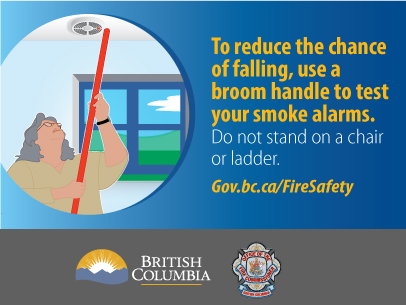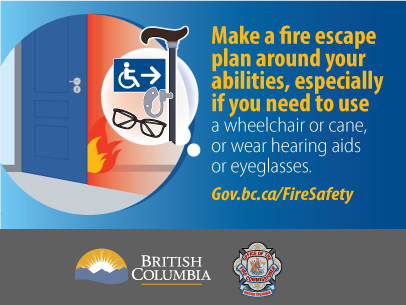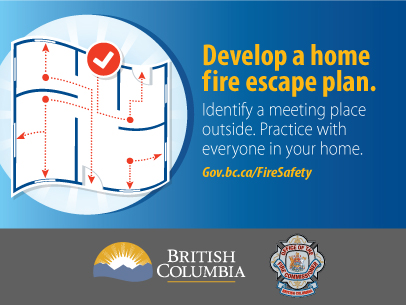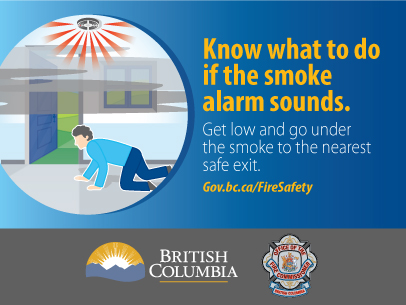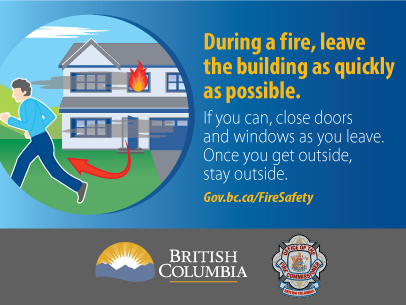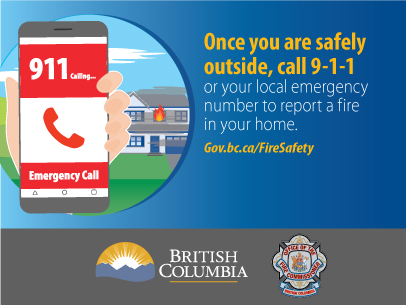Seniors' fire safety social media toolkit
Older adults are vulnerable to fire injury and death, with smoking and space heaters as the most common causes of injuries and fire deaths among them.
Social media kit
How to use this toolkit
Share this content on social media channels. You can copy this content or customize it.
Messages to share
Use these key messages in the social media content that you create.
- Discuss your fire escape plan with family and neighbors. Contact your building manager or fire department to discuss your plan if you need extra help
- Make a fire escape plan around your abilities. If you need to use a wheelchair or a cane, make sure you can get to it easily and get out quickly. If you wear hearing aids or eyeglasses, put them next to your bed while you are sleeping
- If you use a walker or wheelchair, check all exits to be sure that you can go through the doorways
- If you can’t hear your smoke alarm, consider getting one that has a different sound or one that comes with a bed shaker or strobe light
- Use a broom handle to test your smoke alarm, or ask someone for help
- Never smoke around medical oxygen
- Use a timer to remind you that you are cooking
Hashtags
#FireSafety #FirePrevention #Seniors
Graphics
Download and use the graphics below, either by themselves or add additional information in your post to reinforce the message.
Prevention and safety messaging
Portable space heaters
- Only use space heaters that have a protective screen covering the elements.
- Give space heaters at least one metre of clear space all around.
- Keep all flammable materials away from space heaters.
- Do not dry wet shoes, clothing or towels on space heaters.
- Always turn off or unplug space heaters before leaving the house or going to bed.
Smoke and carbon monoxide alarms
- Test smoke and carbon monoxide alarms at least once a month.
- When testing smoke alarms, do not stand on a chair or steps. Instead, use a broom handle to press the test button.
- If you have impaired hearing or vision, purchase and install smoke alarms and alerting devices that meet your needs.
Escape route planning
- Know at least two ways out of every room, if possible
- If you wear eyeglasses or take medication, remember to keep them by your bedside in case of emergency.
- If you live with seniors, help the seniors to escape when practicing your home fire escape plan, and especially during a fire.
Smoking and smoking materials
- Smoking materials include matches, lighters, e-cigarettes, tobacco as well as cannabis, and are one of the top causes of residential fires in B.C.
- If you smoke, consider smoking outside and only where it is permitted, and encourage friends or family who smoke to do the same.
- If you do smoke inside, use large, deep ashtrays. Be cautious when smoking on sofas and couches – a burning cigarette can smolder between the cushions of upholstered furniture and go unnoticed for hours.
- Properly extinguish and dispose of all smoking materials in large, deep ashtrays. Do not discard of any smoking materials in garbage cans or vegetation such as mulch, planter boxes, potted plants or landscaping, peat moss, dried grasses, leaves or other things that could ignite easily.
- Don’t smoke in bed, or when you are drowsy or impaired by alcohol, cannabis, other drugs or certain medications
Additional resources
People over the age of 65 are more likely to be killed or injured by fires. Safety tips for older adults developed by the National Fire Protection Association, provides information to create a comprehensive fire and fall prevention program for older adults in your community.
Follow the links below for additional resources for seniors:

